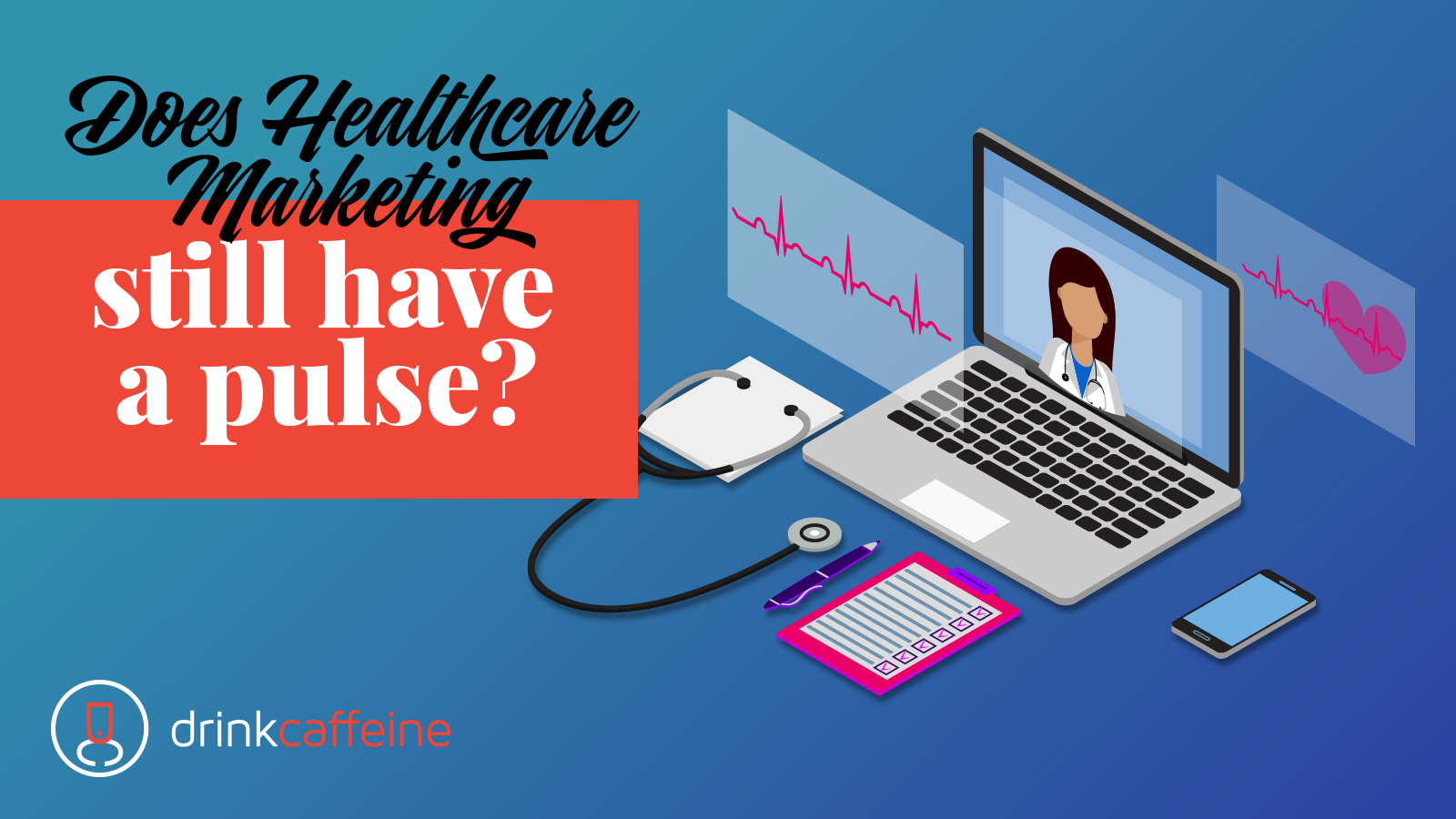Does healthcare marketing still have a pulse?
The rate of scientific and technological advancement in healthcare is dizzying.
Gene therapy and “precision medicine.” Artificial intelligence. Immunotherapy. Stem cell advancements. Big data. Virtual reality.
You can see the technology tsunami reflected in healthcare marketing . Gone are messages about compassionate practitioners. Front and center is technical proficiency: CRM, content management, automation, and electronic record keeping.
We think it’s time to rebalance the equation.
3 ways to keep healthcare marketing human in 2020
- Stop using stock photography. We all know it when we see it: carefully staged, perfectly posed people in fabricated moments of concern, apprehension, engagement with doctors, and what one client called “the ‘after’ photo: Glowing patients with face-splitting smiles, returned to health by the brand. Don’t get us started.Enough. Healthcare marketers can regain humanity and authenticity in marketing content by investing in principal photography.If HIPAA makes it difficult to feature patients, focus on providers. Yes, providers sometimes leave for other organizations, making it necessary to replace visuals of them on websites, brochures, etc. So forge a relationship with local photographers and negotiate a fee for semiannual updates of your image bank. And no cheesy photoshopping.
- Invest in audio. Try getting a doctor on the phone sometime. To the surprise of no one, it’s not easy. But for less than $100 you can get a digital audio recorder that enables you to record interviews with key providers and post them to your website.Three good reasons to do this: 1. It’s a way of allowing prospective or new patients to get a feel for what it’s like to talk to their caregivers before care is received. 2. It’s mobile-friendly content that patients can listen to, for example, in waiting rooms. 3. It’s cheaper than video.
- Author content about providers. Physicians remain reluctant to use rating sites to attract new patients – even though a rising percentage of patients use online reviews. It’s understandable. Many physicians feel they face enough risk in daily practice without exposing themselves online with an elevated profile. [There’s actually some good research that segments unhappy patients. Quick spoiler: OB-GYN patients post the most negative comments.]One way to connect patients with provider information is with short Q&A-style articles that include personal information about the provider: Education, why he or she entered their field of medicine, passions, hobbies, etc. The content can be posted to your site or printed out as direct distribution materials for patients.Three reasons to consider this:
- It gives providers depth, personality, and humanity.
- It can all be done by email: Just develop 3-5 questions and allow the provider to respond.
- Once you’ve established a template for layout (with photography and graphics), it’s plug and play.
Don’t let the technical aspects of healthcare marketing eclipse the people who deliver the end product. In 2020, put life back into your healthcare marketing content.
Interested? Talk to us over a beverage.


